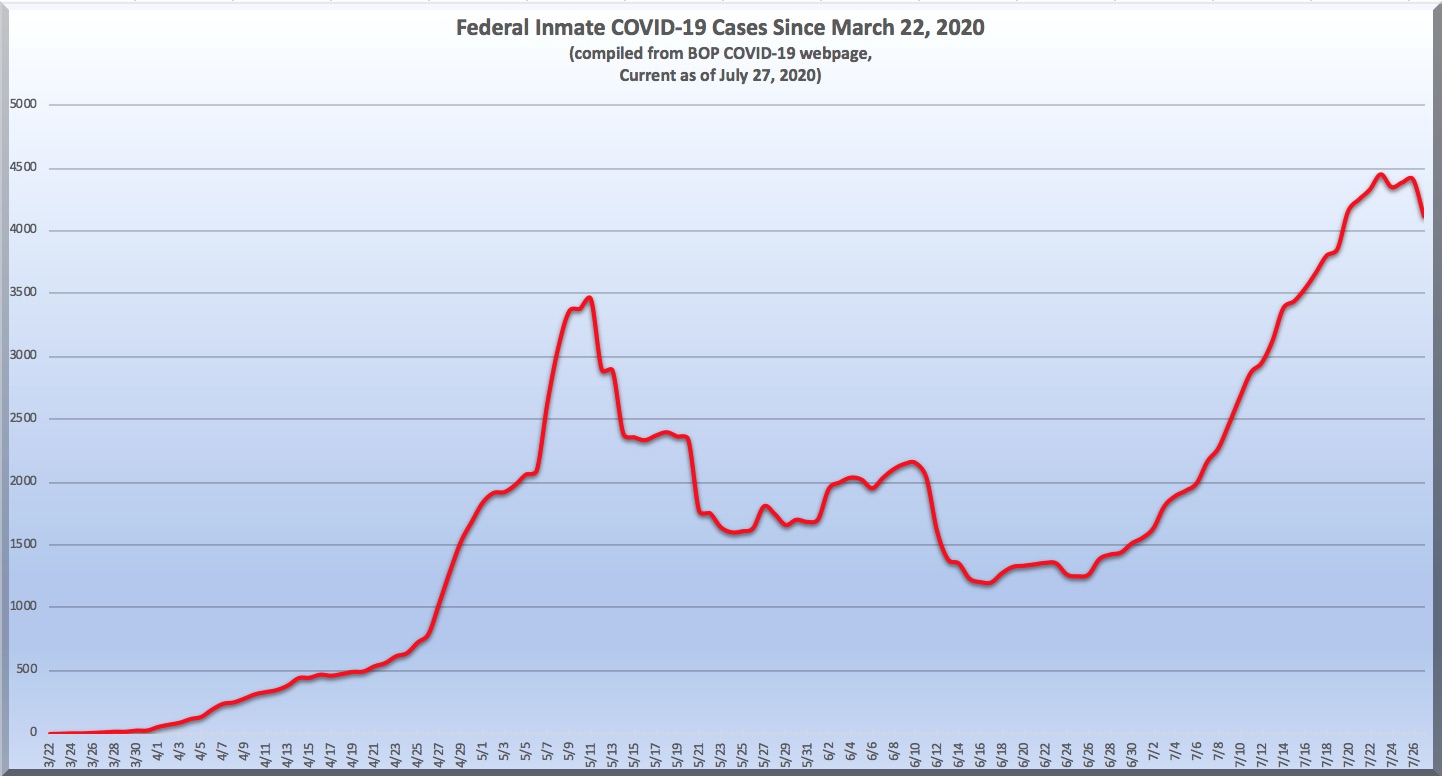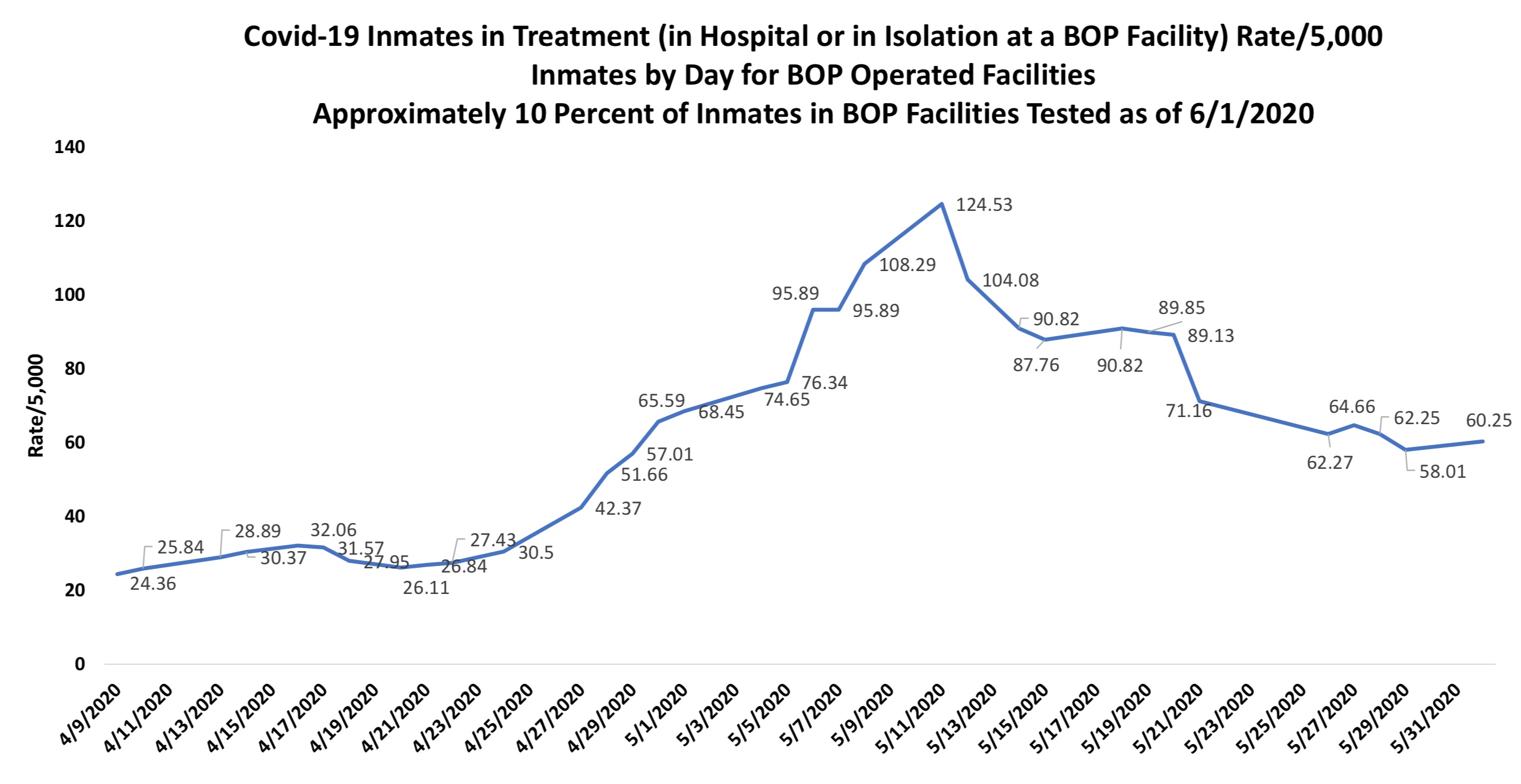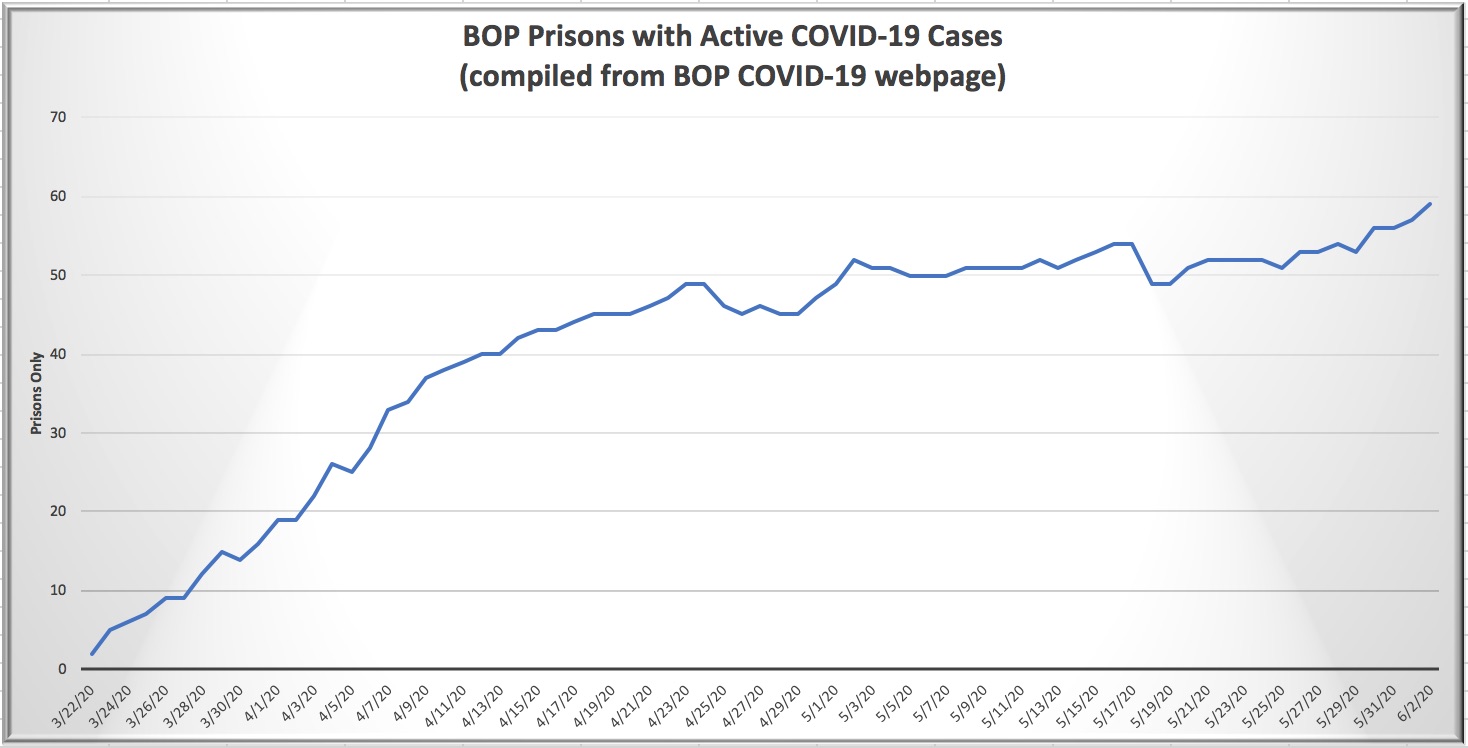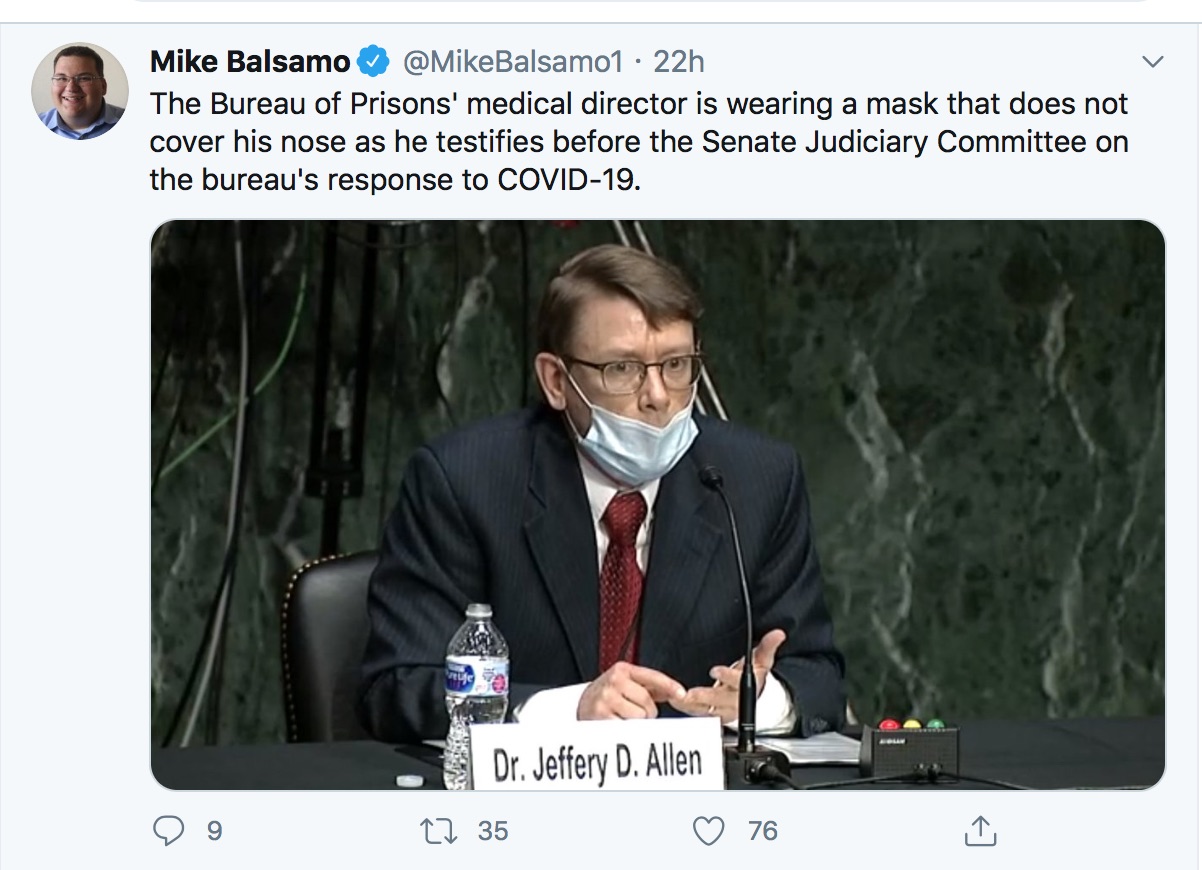We post news and comment on federal criminal justice issues, focused primarily on trial and post-conviction matters, legislative initiatives, and sentencing issues.

ACLU CLAIMS BOP COVID TESTING STRATEGY IS ‘INCOHERENT’
A coalition of civil rights groups led by the American Civil Liberties Union filed a class-action lawsuit against the Federal Bureau of Prisons last week over its handling of COVID-19 outbreaks at FCC Butner. The suit seeks an injunction to protect Butner prisoners, especially “vulnerable people… who, because of their medical conditions and/or advanced age, are at higher risk of severe injury or death from COVID-19.”
 The lawsuit alleges that the BOP has “tested too few people at Butner, too infrequently, and too late,” and fails “to separate people who tested positive from those who tested negative for several days after receiving the test results.” The suit claims screening for symptoms has also been sporadic and ineffectual. The claims include allegations of inadequate cleaning and disinfecting procedures to adequately protect the men housed at Butner. As well, the allegations take aim at BOP management of CARES Act home confinement and compassionate release:
The lawsuit alleges that the BOP has “tested too few people at Butner, too infrequently, and too late,” and fails “to separate people who tested positive from those who tested negative for several days after receiving the test results.” The suit claims screening for symptoms has also been sporadic and ineffectual. The claims include allegations of inadequate cleaning and disinfecting procedures to adequately protect the men housed at Butner. As well, the allegations take aim at BOP management of CARES Act home confinement and compassionate release:
Despite direction from the US Attorney General months ago to expeditiously consider medically vulnerable people for home confinement or other release, Defendants continue to oppose motions for compassionate release made by medically vulnerable people, and they have failed to order furloughs or transfers to home confinement with sufficient speed and in sufficient numbers.
FCC Butner, located about 25 miles north of Raleigh, North Carolina, holds nearly 4,000 male inmates, with five facilities: a medical center, a minimum-security camp, a low-security prison and two medium-security facilities.
The civil rights groups filed suit against the BOP last spring, alleging that officials have failed to protect the Butner population. In early June, a federal judge sided with the BOP, agreeing it had “made reasonable efforts” to control the virus.
In another suit, Lompoc prison officials were ordered by a Los Angeles federal judge three weeks ago to expedite the evaluation of more than 120 inmates deemed eligible for home confinement due to their risks of COVID-19, although only 44 have been released since July. Five inmates brought the federal class-action lawsuit last May, seeking alternative confinement after a COVID outbreak at Lompoc infected more than 1,000 inmates and staff. At least four inmates died as a result of the outbreak.
The October 8 order directed the BOP to confirm that all 129 eligible inmates were released to home confinement.
 The BOP had argued there is no specified timeline to release inmates to home confinement and that such release requires a three-judge panel, according to the response included in the Oct. 8 filing. Meanwhile, last Friday the agency blasted a court-ordered report by Dr. Homer Venters, countering with its own expert who concluded that “FCC Lompoc has acted reasonably and diligently in dealing with the COVID-19 pandemic based on the CDC guidance and BOP guidance applicable at the time, including the comprehensive BOP COVID-19 Pandemic Response Plan.” The expert complained that Dr. Venters “consistently bases his critical conclusions on unverified statements that were made to him by unidentified inmates, despite the harsh judicial criticism that he recently received in an Eastern District of New York COVID-19 case for following that unreliable methodology.”
The BOP had argued there is no specified timeline to release inmates to home confinement and that such release requires a three-judge panel, according to the response included in the Oct. 8 filing. Meanwhile, last Friday the agency blasted a court-ordered report by Dr. Homer Venters, countering with its own expert who concluded that “FCC Lompoc has acted reasonably and diligently in dealing with the COVID-19 pandemic based on the CDC guidance and BOP guidance applicable at the time, including the comprehensive BOP COVID-19 Pandemic Response Plan.” The expert complained that Dr. Venters “consistently bases his critical conclusions on unverified statements that were made to him by unidentified inmates, despite the harsh judicial criticism that he recently received in an Eastern District of New York COVID-19 case for following that unreliable methodology.”
The BOP’s COVID numbers – 1,766 sick inmates as of last Friday – are down 7% from a week ago. But ominously, the number of sick staff continues to climb, hitting 896 on Friday. A month ago, there were 724 sick staff. Nationwide, 75% of all prison and jail staff cases since March have recovered. But only 60% of BOP staff cases have done so, suggesting that BOP staff COVID cases are increasing at a much faster rate than the rest of the country. This is critical, because the staff is the primary means by which COVID is being brought into facilities.
Circumstances surrounding the latest inmate COVID-19 death, Joe McDuffie at El Reno, are concerning. Joe tested negative for COVID on Oct 13. After that, according to the BOP, “he received daily symptom checks and did not express any symptoms associated with COVID-19. On Friday, October 23, 2020, institution staff found Mr. McDuffie unresponsive.” He died later that day.
The BOP says 46% of the inmate population has been tested for COVID. One out of four of those 69,500 tests has been positive.
Hallinan v. Scarantino, Case No 5:20-ct-3333 (ED NC, filed Oct 26, 2020)
The Appeal, Coronavirus in Jails and Prisons (October 28, 2020)
BOP, Inmate Death at El Reno (October 29, 2020)
Santa Maria Times, Lompoc prison officials release 44 inmates to home confinement; more than 120 deemed eligible (October 30, 2020)
Respondents’ Statement, Torres v. Milusnic, Case No 20cv4450 (CD California, October 30, 2020)
– Thomas L. Root















